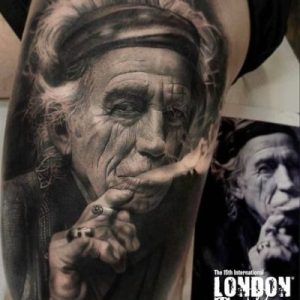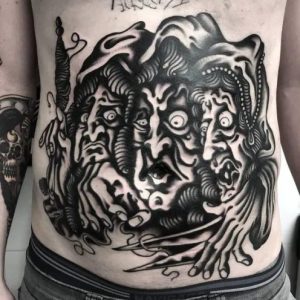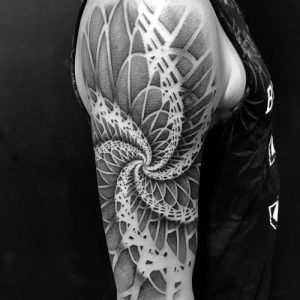
Paing Takhoon tattooing is an ancient body art tradition from Myanmar that has been practiced for centuries. This art form is deeply rooted in Myanmar’s spiritual and cultural history and has recently gained international recognition for its bold and intricate designs.
Paing Takhoon tattoos are typically created by hand using a long bamboo needle that is dipped into ink and then punctured into the skin. The designs are often intricate and symbolic, representing various aspects of Myanmar’s cultural and spiritual heritage. Common motifs include animals, mythical creatures, and religious symbols.

One of the most notable aspects of Paing Takhoon tattooing is its association with Myanmar’s ethnic minority groups. Many of these groups have been practicing the art form for generations, and the tattoos are often used as a form of identification and a way to express cultural identity. In recent years, there has been a growing interest in Paing Takhoon tattoos among both locals and tourists, with many seeking out traditional designs as a way to connect with Myanmar’s rich cultural heritage.

Despite its growing popularity, Paing Takhoon tattooing is not without controversy. In the past, the practice has been associated with criminal gangs and has been banned by the government in certain areas. Additionally, the use of unsanitary needles and ink can lead to serious health risks, and there have been cases of infections and even deaths as a result of the practice.

To combat these issues, some Paing Takhoon tattoo artists have formed collectives and associations to promote safe and ethical practices. These groups work to educate both practitioners and the public about the history and cultural significance of the art form, while also advocating for better regulation and oversight of the industry.
In recent years, Paing Takhoon tattooing has become increasingly popular among international travelers. Many are drawn to the intricate designs and the opportunity to connect with Myanmar’s rich cultural heritage. However, it is important for visitors to understand the cultural significance of the practice and to seek out reputable artists who prioritize safety and ethical practices.

In conclusion, Paing Takhoon tattooing is a bold and spiritual art form that has been practiced for centuries in Myanmar. While the practice has faced controversy and health risks, it remains an important aspect of the country’s cultural heritage. As the art form continues to gain international recognition, it is important for both practitioners and the public to prioritize safety, cultural sensitivity, and ethical practices.






